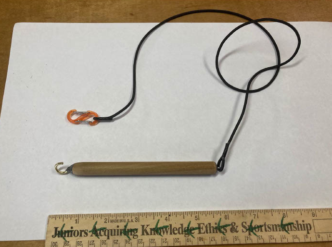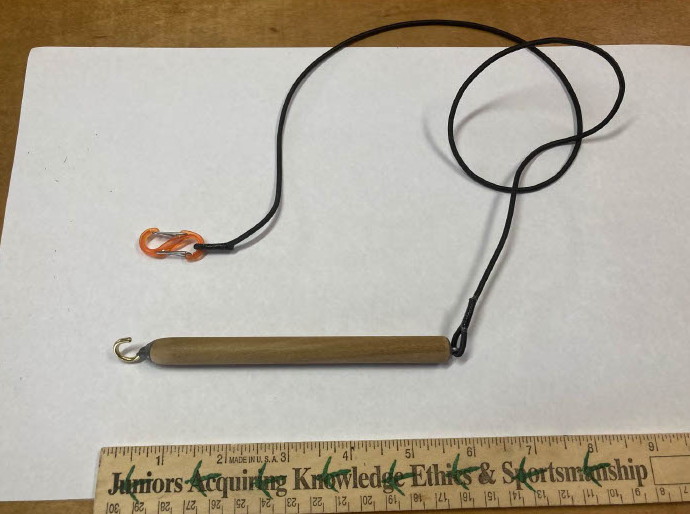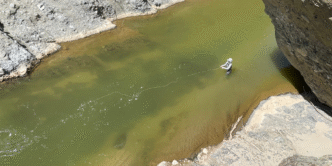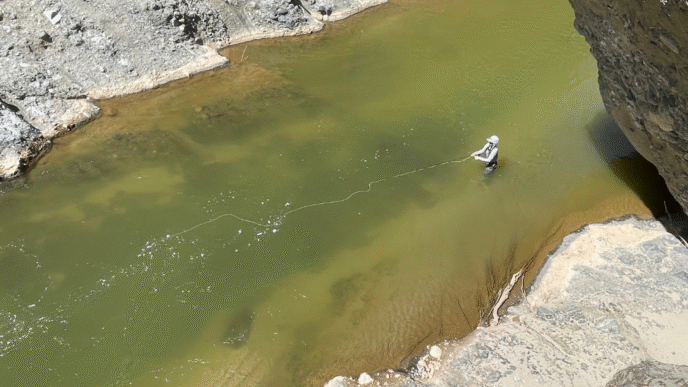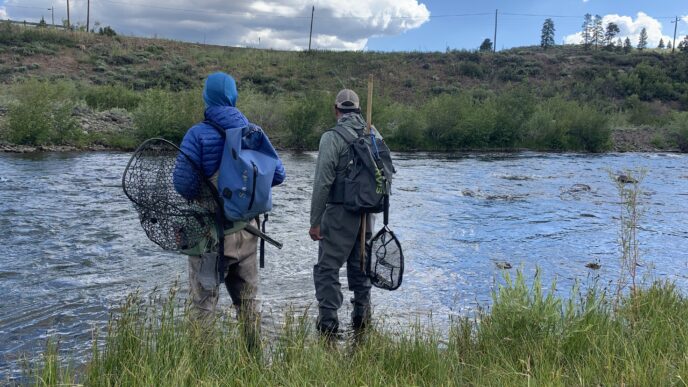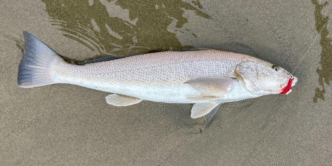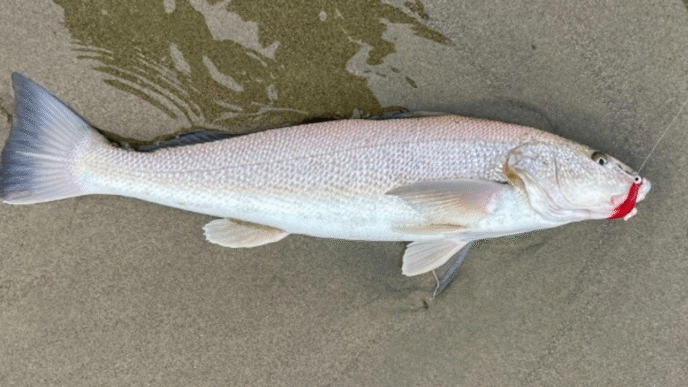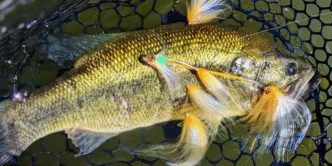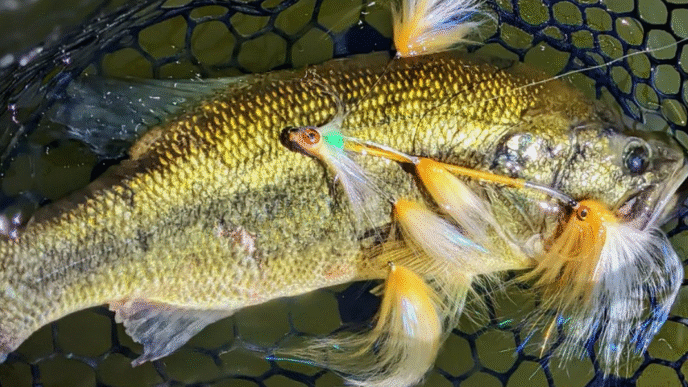It’s Friday afternoon and you are in the garage going through your tackle and associated gear, getting ready for tomorrow’s day on the water.
Fly rod, reel, line, and leader. Check.
Fly box, tippet spools, and nippers. Check.
Waders, boots, and vest or pack. Check.
Hat and sunglasses. Check
Landing net and forceps. Check.
Uh, let’s recheck the second part of that check.
Now, don’t get me wrong; forceps are versatile tools that have been in widespread use on rivers, streams, ponds, lakes, and coastal waters for decades by generations of fly anglers. But when it comes to removing a fly from the outer parts of a fish’s mouth, I believe there is something better.
A Hook Removal Tool (HRT)—also known as “Hook Release Tool”, “Release Tool”, “Quick Release”, and “Shaker Stick”, to name a few—is simply a piece of strong wire rounded on one end into a “hook” fastened at the other end to some sort of handle, either vertical in configuration or in a “T” shape.
When used properly, it is extremely fast and efficient in removing a fly from a fish’s mouth by engaging the “hook” part of the tool with the bend of the hook, and then—with a simple flick of the wrist—pulling on the tool in the opposite direction.
What makes the HRT so special is that fish do not have to be grasped with one’s hands to be effectively unhooked.
Here is how to do it:
Play the fish as you normally would. I prefer to play a fish as quickly as possible to just as it shows signs of tiring, then capturing the fish with a long-handled net that has a fish-friendly soft rubber bag.
Keeping the netted fish in the water, I tuck the net’s handle under my left arm, grabbing hold of the leader with my left hand. Taking the HRT in my right hand, I slide the HRT’s hook down along the leader to the bend of the fly’s hook, then connect the HRT’s hook to the bend of the fly’s hook. I then quickly but gently pull the HRT in the opposite direction that the fly is embedded.
Voila! Just like that, the fly has been removed. And as the fish is still captured in the net, I can—by observing its behavior—determine if it can be immediately released or if it needs time for revival.
While barbless hooks are almost always easier to remove than barbed hooks (and thus inflict far less trauma to a fish upon removal), they can be a little stubborn to remove at times, depending upon where on the fish’s mouth the fly took purchase. This is why I always have an HRT with me when I am fishing with the intent of releasing fish that I catch.
I find that using an HRT is much faster in removing hooks than are forceps because I can simply slide the HRT’s hook down the leader to the fly, rather than having to precisely aim the tips of the forceps onto the fly, which sometimes can be quite small and difficult to see.
Another excellent reason to use an HRT is that these do far less damage to flies than do forceps, which, in order to be operated correctly, must be clamped down onto the fly. This clamping action routinely damages tails on flies and really does a number on epoxied wing cases on nymphs as well as to the eyes on streamers.
The only time an HRT (same goes for forceps) is not a good option for removing a fly is when a fish has taken it deeply into its mouth and it is imbedded near the gills. All the studies I have read say that if the fish is to be released, its best chance for survival is to cut the leader near its mouth and leave the fly where it is, thus avoiding the fish experiencing fatal hemorrhaging.
HRTs are very inexpensive. I have seen them anywhere from $7 to $20; price is dependent upon materials and construction.
If your local fly shop doesn’t carry HRTs, you can easily make your own for under $3 with readily available materials from a hardware store.
How to make your own HRT
One 6” piece of 7/16” diameter Hardwood Dowel @ 87 cents.
One 5/8” Brass Cup Hook @ 63 cents.
One ½” Eye Screw @ 27 cents.
24” of 3/32” Bungee Cord (for a lanyard) @ 38 cents
One small Carabiner Clip @ 80 cents (the carabiner clip is for securing the HRT to attachment points on vests or packs, even a button loop on a shirt pocket, via the bungee cord/lanyard).
Total cost per HRT is $2.95
To construct this HRT:
Step 1.) Cut a six-inch length of 7/16” hardwood dowel and lightly sand each end (I like to put a gentle taper on the end where the cup hook goes).
Step2.) Screw the brass cup hook into one end of the dowel.
Step 3.) Screw the eye screw into the other end.
Step 4.) Optional – For an added level of strength, place a small dab of JB Weld epoxy where the brass cup hook and the eye screw join the wood.
Step 5.) Connect the 24” length (longer or shorter depending on your needs) of bungee cord to the eye screw and the carabiner clip. You can make this connection with something like a perfection loop or bowline knot. A more streamlined connection can be made using a fly-tying bobbin and some 210-denier tying thread to whip connection loops. Apply a light coating of Sally Hansen’s to seal the whipped thread.
For a relatively miniscule investment, you can either buy or assemble an HRT that will make the release of game fish easier, faster, and thereby more effective in reducing mortality rates, which is something that will benefit all of us.
As the late Lee Wulff said many years ago, “A game fish is too valuable to be caught only once.”



